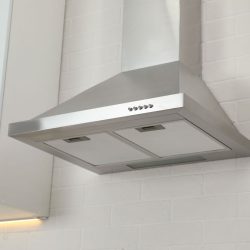Whether you're cooking pizza at home or in a professional setting, pizza ovens let you take your cooking skills to the next level. But does your pizza oven need a hood?
Both outdoor and indoor pizza ovens benefit from a hood. These hoods preserve your pizza's taste, keep your pizza oven at a reasonable temperature, and prevent damage from impacting the oven's functionality.
There are some circumstances in which an outdoor pizza oven may benefit from a modified flue or hood. If you're cooking a pizza indoors, though, you're required by law to have a hood located above your oven's station. Let's break down the specificities of these oven hood essentials.
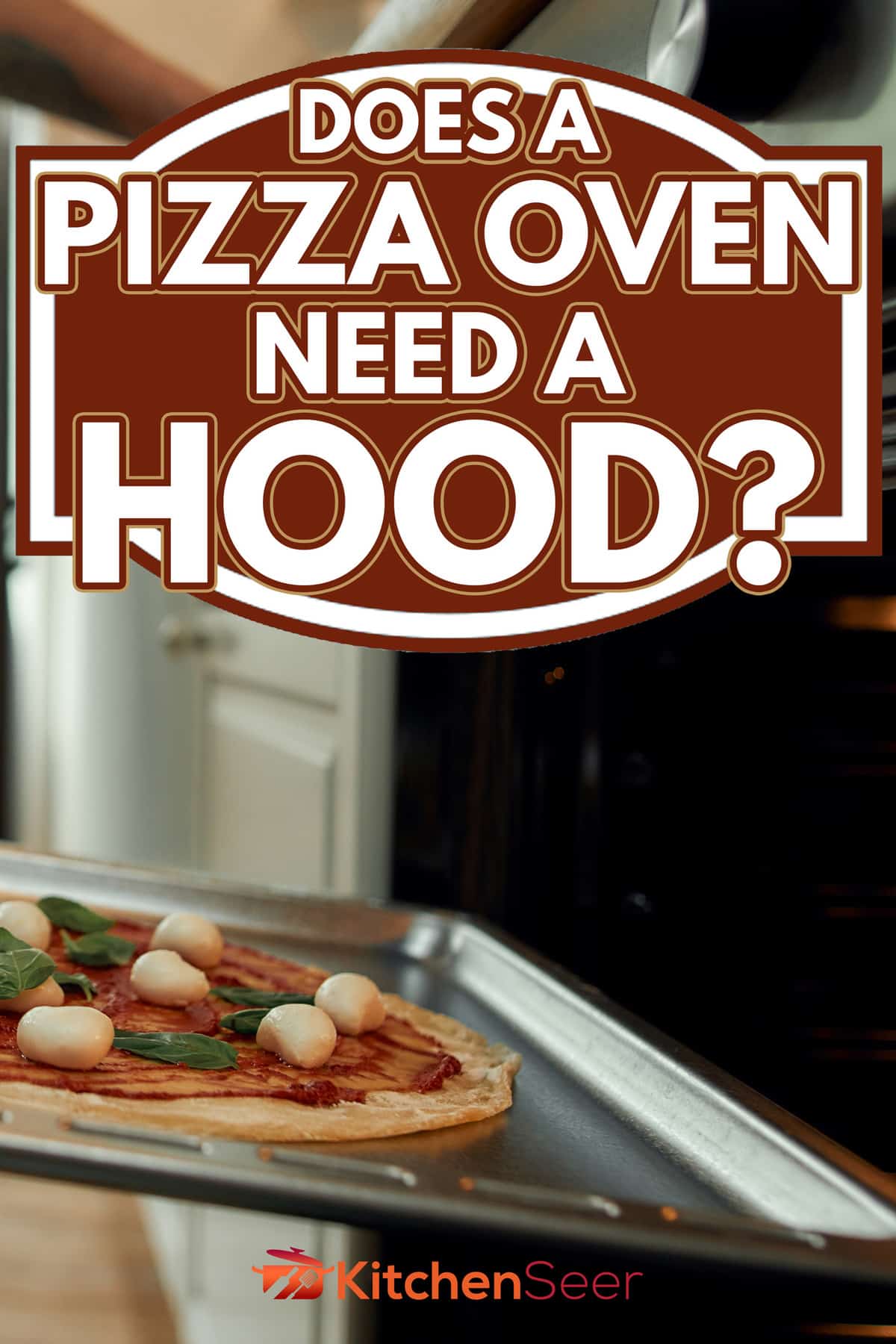
Does A Pizza Oven Need A Hood?

Pizza ovens often come with their hoods pre-installed. This is most often the case if you have a pizza oven meant to be used indoors. Typically, restaurateurs and casual cooks alike are expected to keep a hood on their pizza ovens to control indoor temperatures and prevent fires.
Indoor pizza ovens, then, absolutely need hoods. These hoods ensure that the building you're in doesn't overheat or endure undue structural damage. They'll also keep kitchen inspectors from shutting down a restaurant.
Do Outdoor Pizza Ovens Need Hoods?
Technically, you may not need a pizza oven hood on an oven that you keep outdoors. That said, you should still consider purchasing one to preserve the safety of your yard. The heat from an unvented pizza oven can damage your trees and bushes, even if none of the foliage catches on fire.
However, it is worth noting that an outdoor pizza oven without a hood will smell like the fuel you use to cook. If you're using wood, this smell might be enjoyable.
However, excessive gas or coal fumes may make your cooking experience less enjoyable. You can either hope for a windy day while you're out in the yard, or you can invest in a hood that redirects the smell and lets you focus on your pizza.
How Does a Pizza Hood Work?
Your pizza hood directs fumes from your fuel source: wood, coal, or gas, away from your cooking food. While this preserves the flavor of your pizza, it also helps keep the environment you're in bearable.
Think of it this way: the pizzas you cook in your oven need to reach a temperature somewhere between 800 and 900 degrees Fahrenheit. If you try to have an oven reach those temperatures without an affixed hood, the excess gas and heat from your endeavor are going to fill up your room.
Not only is it unsafe for a room to crest 800 degrees Fahrenheit, but it's also nearly impossible. Additionally, a room with a hoodless oven will try to match the oven's temperature, if only to equalize the space.
How Do You Vent A Pizza Oven?
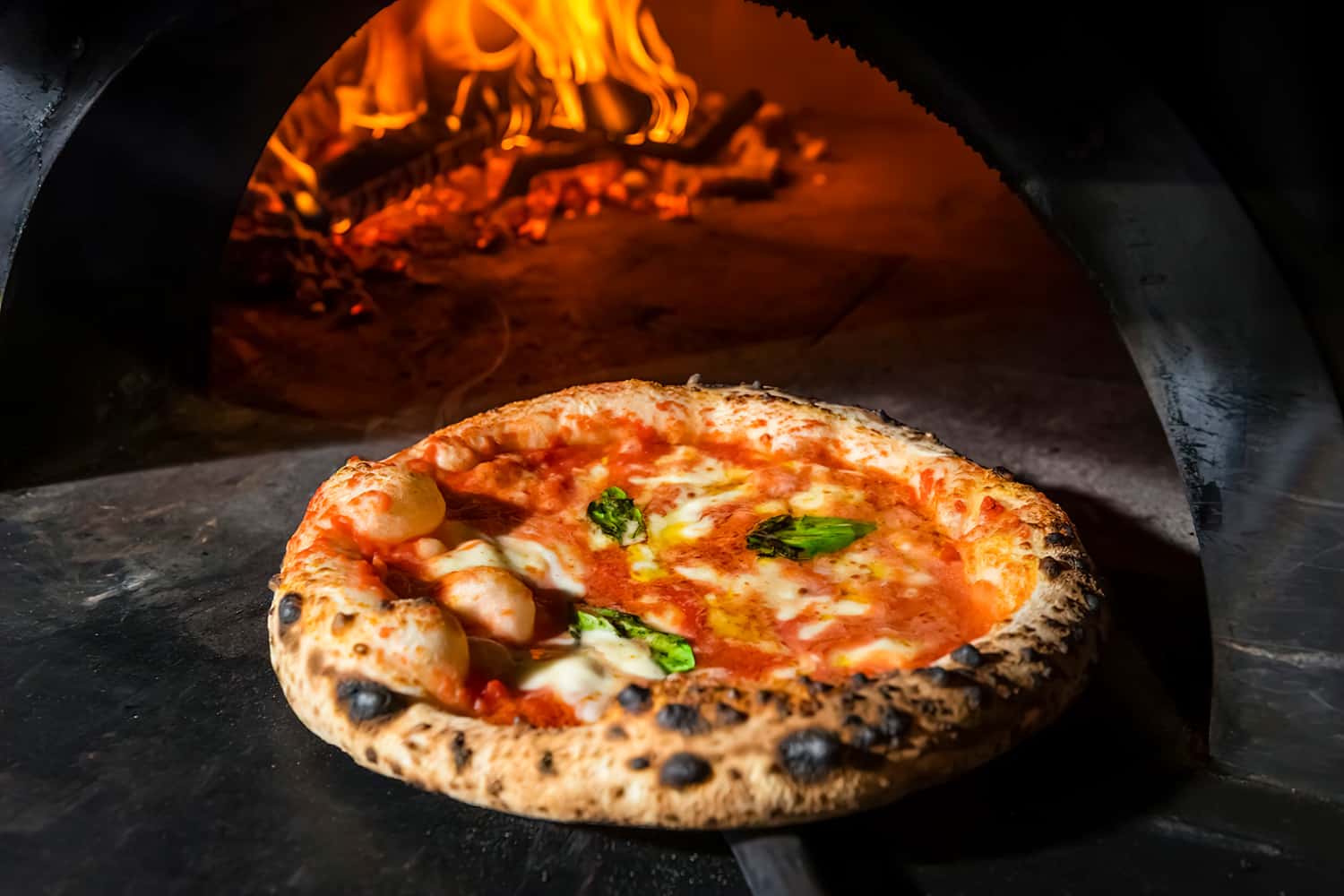
You can vent your pizza oven in one of two ways. If your oven has a vent in the front of the unit, you can vent it through "traditional" means. Ranges with a built-in chimney will have a central vent, which will require you to open the attached hood to vent heat into the air.
In both cases, you can control your vent via a lever attached to your pizza oven. Be careful when handling this lever, as it may be hot due to its proximity to the oven. Make sure to protect your hands, and you'll have an easier time ensuring that you're using your pizza oven properly.
Why Do You Need To Vent Your Pizza Oven?
You need to vent your pizza oven for three reasons. To start, allowing fresh air into your oven allows you to keep your heat consistent. Fire, after all, needs air to stay alive, regardless of the source.
Similarly, venting an oven helps you keep your food tasting good. If you're not careful to direct smoke away from your pizza, there's a chance that your final product may taste smoky or even burnt, even after you've kept a close eye on your oven.
Finally, venting your pizza oven ensures the oven itself doesn't overheat. Because your pizza oven can reach such high temperatures, you need to vent it to keep all its working parts in good order. What's more, dispersing this heat helps you keep the room a pizza oven is in more comfortable.
Furthermore, the more heat builds up over time; the more difficult your oven may be to use.
Do You Need To Vent An Outdoor Pizza Oven?
You do need to vent an outdoor pizza oven. While you may not have to worry as much about the heat's impact on your surrounding environment, an unvented oven can still wreak havoc on the taste of your pizza.
Keep your fire going and your pizza tasty by venting your pizza oven regularly.
How Do You Install A Pizza Oven Hood?
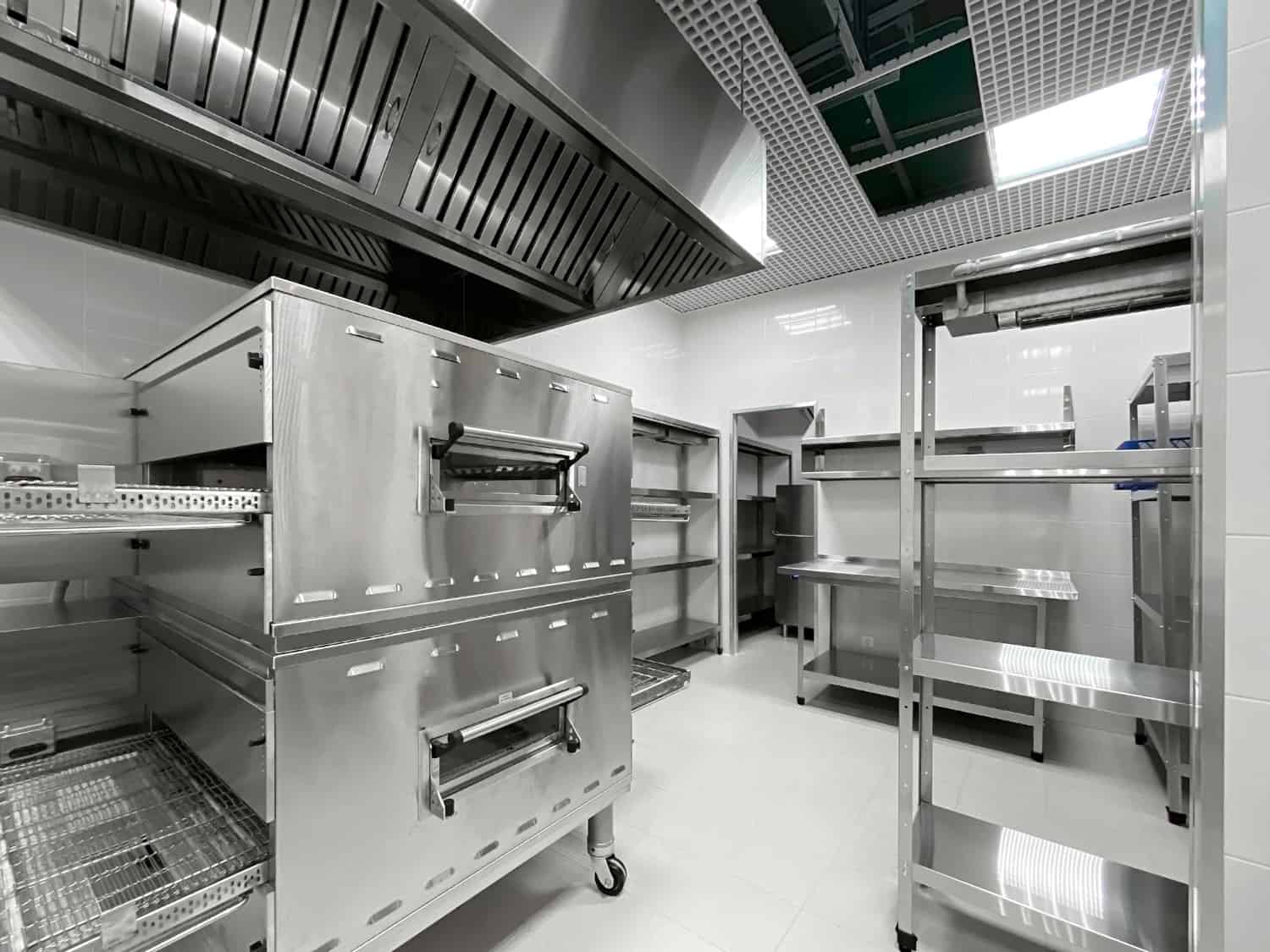
Both indoor and outdoor pizza ovens come equipped with oven hoods in most cases. As such, you won't need to hassle with the installation process. If you do purchase an oven without a hood, though, you'll need to work with area professionals to determine what manner of installation best suits your needs.
Do not try to install a pizza oven hood on your own. The installation process for your oven varies depending on your unit's model and the type of hood that you bring home with you. Instead, speak with representatives at your nearest kitchen goods store to determine if there's anything you need to provide to make installation simpler.
What Kind Of Hood Do You Need For A Pizza Oven?
You can use two kinds of hoods for your pizza oven: Type I and Type II. Type I hoods remove smoke, water condensation, and grease condensation from your kitchen. As a result, these hoods are known as grease hoods.
You'll often see Type I hoods over conveyor pizza ovens in commercial settings than in traditional ovens. However, the type of hood you're required to have will depend on an area's building codes. Be sure to check in with the appropriate representative before you request the wrong kind of installation.
Type II hoods, comparatively, only remove exhaust and odors from your kitchen. While you can install Type II hoods over a traditional pizza oven, the hood may not be as effective as its grease-tackling alternative.
What Other Differences Between Hoods Are There?
The differences between Type I and Type II hoods don't just lie in their functionality. You can mount these hoods differently. They also come in different sizes.
More often than not, your Type I hood can be wall-mounted with supports along three walls. Alternatively, you can hang a Type II hood above the appropriate stations.
You'll also want to size your hoods based on the breadth of your pizza oven. That considered, get the dimensions of your oven written down long before you start shopping for a hood. Post-installation, the last thing you want to discover is that your hood is too small to handle your oven's output.
How Hot Does A Pizza Oven Flue Get?
The temperature of your pizza oven and its flue are not going to be the same, even though the two units work together. Instead, your flue tends to be slightly less hot than the rest of your unit.
That said, the average pizza oven produces enough heat to register at between 800 and 900 degrees. With that in mind, your flue certainly will not be safe to touch.
Instead, you can expect your pizza oven flue to reach temperatures around 600-700 degrees Fahrenheit. Even though heat rises, the temperature of the flue should decrease towards its top, particularly on windy days or in well-ventilated areas.
How Much Smoke Does A Pizza Oven Produce?
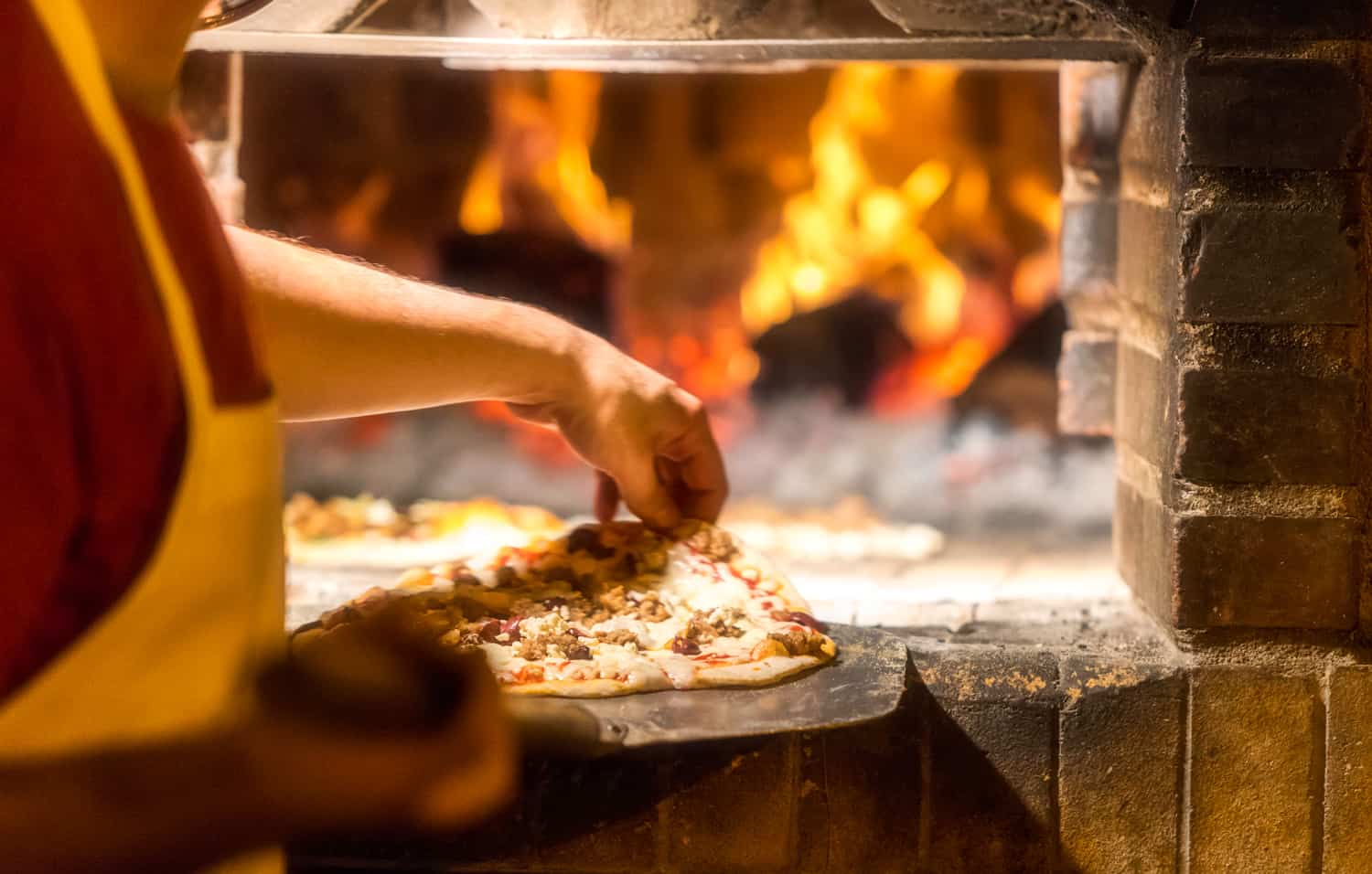
In general, your pizza oven shouldn't produce a significant amount of smoke. Instead, wood, coal, and propane should all produce light smoke, lasting for up to ten minutes but rarely longer.
If you notice that your pizza oven is producing lots of smoke, you may have a defect on your hands. Similarly, smoke that lasts for more than ten minutes may cause concern.
If you notice your pizza oven smoking in excess, remove the pizza you're cooking and turn off the oven. You can often communicate with a manufacturer if the oven is still under warranty.
Even if the oven isn't protected by its manufacturer, consider contacting the manufacturer's hotline to learn more about the potential damage you're facing.
To Wrap Things Up
Pizza oven hoods are essential to your pizza-making endeavors. Whether you're working in a restaurant or making pizza at home, these hoods improve the taste of your pizza while also ensuring your safety and comfort.
Even if your pizza oven is based outdoors, you can usually find a hood or flue that makes baking your pizza easier. Regardless, make sure to check your area's building codes before starting a project, and have fun cooking!


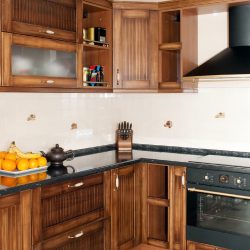


![Pizza boxes stack isolated on white - How Big Is A Pizza Box [By Brand]](https://kitchenseer.com/wp-content/uploads/2022/04/Pizza-boxes-stack-isolated-on-white-250x250.jpg)
